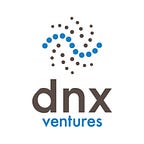Financial Modeling for Series A-C Fundraise: 5 Key Types of SaaS Metrics to Include
DNX hosted a monthly knowledge workshop for our portfolio companies on the topic: “Financial Modeling for Series A-C Fundraise” with presenter Scot Mollot. In this blog we highlight some of Scot’s best practices shared in the workshop:
Building a solid financial model can be critical to the success of startups seeking funding from investors. Even in times of economic uncertainty or poor market conditions, good companies continue to prove they can still secure funding. Founders looking to raise their next round — regardless of the environment — must leverage the financial model. Preparation for this next stage should begin after a company has raised initial funding, developed compelling products, and achieved market traction and initial customer adoption.
Reaching key benchmarks such as ARR targets, growth multiples, and development stages can help determine if a company is ready for the next funding stage.
In fundraising, a solid financial model helps demonstrate a massive market opportunity for investors, making them excited to invest in the company. Founders should use key metrics from the model when speaking with investors to show how they will manage their cash runway to scale the company and achieve significant milestones.
In a model, investors will look for a founder’s vision for the next few years and their plan to scale the company to $100M+ ARR. Common investor concerns include:
- Is it a venture backable business? Are they trying to solve a problem with a sizable market opportunity?
- How will the funds be used to scale? Are they taking into consideration the cash they will need?
- Are their assumptions realistic? How do they align with historical data and industry competitors?
- Do the founders / CEO understand the financial drivers of the business? Have they demonstrated they are thinking about more than the technology?
Key metrics help founders answer these pressing questions from investors. Decisions on what metrics matter most will vary from company to company based on the industry and competitors.
When looking at SaaS companies, in general, there are 5 key types of metrics to consider when fundraising:
- Growth
- Indication of product-market fit, momentum and market traction
- Metrics: ARR, ARR growth rate, Rule of 40
- Retention
- Indication of the overall health of the business
- Metrics: Net revenue (NRR), Gross revenue (GRR), Logo
- Efficiency
- Indication of how efficiently the company creates value
- Metrics: Sales efficiency, CAC payback, ROI, Magic Number
- Burn
- Indication of spend needed to generate incremental ARR
- Metric: Burn multiple
- Unit Economics
- Indication of customer value and the cost of acquiring customers
- Metrics: LTV:CAC Ratio, Gross Margin
Metrics will evolve across funding stages and founders must continually monitor them. As a company scales from Series A to Series C, there are some general benchmarks that companies will want to achieve for certain key metrics, such as: ARR growth rate of 3x-3x-2x-2x-2x (year over year), Gross Margin of ~80%, Net Revenue Retention (NRR) of >100% and SaaS Magic Number of 1.00+. How these metrics scale over time and the ultimate target benchmark also remains dependent on the company’s competitors and the industry.
It is important to note that financial modeling like this is useful for the next round of fundraising and is not meant to apply long term. Ultimately, building a 10–20 year financial model is unrealistic for a company that only really has insight into the first year. As companies scale and change, the assumptions tied to the financial model change as well with more scenarios being built out. With that said, the principles for building a strong financial model remain generally the same, although the details in the model change over time as a company grows.
Thank you, Scot, for sharing your insights on financial modeling with the DNX community! Your expert knowledge will remain invaluable as the DNX portfolio companies continue their financing journeys.
Scot Mollot is the Vice President of Finance at Attivo Partners, a full service Finance and Accounting firm, and was joined by fellow Attivo members Dorothy Pavloff, Director of Business Development and Steve Nathan, Consulting CFO. As demonstrated by his 20+ years of experience as a finance professional in corporate and advisory roles, focusing on startups and VC funded companies, Scot is an expert in building financial models for fundraising.
